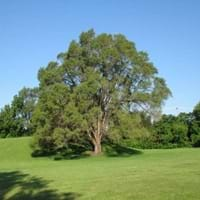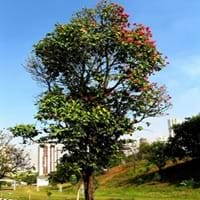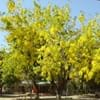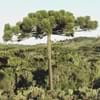Life Span
Perennial
Perennial
Origin
Asia
Central America, South America
Types
Not Available
not available
Habitat
Woodland Garden Canopy
Dry areas
USDA Hardiness Zone
2-9
10-15
Sunset Zone
A1, A2, A3, 1a, 1b, 2a, 2b, 3a, 3b, 4, 5, 6, 7, 8, 9, 10, 11, 14, 15, 16, 17, 18, 19, 20, 21
H1, H2
Habit
Upright/Erect
Upright/Erect
Minimum Height
Not Available
Minimum Width
Not Available
Flower Color
Not Available
White, Magenta, Rose, Light Green, Violet
Flower Color Modifier
Bicolor
Bicolor
Fruit Color
Green, Tan
Magenta, Rose, Violet
Leaf Color in Spring
Dark Green
Green, Light Green, Dark Green
Leaf Color in Summer
Dark Green
Green
Leaf Color in Fall
Dark Green
Green
Leaf Color in Winter
Not Available
Green
Leaf Shape
Elliptic
Ovate
Plant Season
Summer
Spring, Summer, Fall, Winter
Sunlight
Full Sun
Full Sun, Partial Sun
Growth Rate
Very Fast
Fast
Type of Soil
Clay, Loam, Sand
Loam
The pH of Soil
Acidic, Neutral, Alkaline
Acidic, Neutral
Soil Drainage
Average
Average
Bloom Time
Spring
Early Spring, Spring, Late Spring, Late Winter
Tolerances
Pollution, Drought
Drought
Where to Plant?
Ground
Ground
How to Plant?
Seedlings
Seedlings, Stem Planting
Plant Maintenance
Medium
Medium
Watering Requirements
Do Not over Water, Needs watering once a week
Do not water frequently
In Summer
Lots of watering
Ample Water
In Spring
Moderate
Ample Water
In Winter
Average Water
Average Water
Soil pH
Acidic, Neutral, Alkaline
Acidic, Neutral
Soil Type
Clay, Loam, Sand
Loam
Soil Drainage Capacity
Average
Average
Sun Exposure
Full Sun
Full Sun, Partial Sun
Pruning
Remove diseased branches by the tool's blades dipped into the alcohol solution
Prune to control growth, Remove dead branches
Fertilizers
20-5-10 fertilizer
All-Purpose Liquid Fertilizer, fertilize in growing season, very little fertilizers at a time
Pests and Diseases
Aphids, Leaf spot, Powdery mildew
Spider mites
Plant Tolerance
Drought
Drought
Flowers
Insignificant
Insignificant
Flower Petal Number
Not Available
Single
Foliage Texture
Medium
Coarse
Foliage Sheen
Matte
Glossy
Attracts
Insects, Not Available
Bees
Allergy
Mild Allergen
Not Available
Aesthetic Uses
Bonsai
Showy Purposes
Beauty Benefits
Not Available
Not Available
Environmental Uses
Air purification
Used to establish native woodland
Medicinal Uses
Antibilious, Antidote, Demulcent, Diuretic, Febrifuge, Poultice
Diarrhea, Dysentry, Piles
Part of Plant Used
Fruits, Inner Bark, Leaves
Whole plant
Other Uses
Inner bark can be dried and made into noodles, Sauces, Sometimes used for making wine, Used as a potherb, Wood used for boat making
Used as Ornamental plant, Used for its medicinal properties, Wood is used in construction
Used As Indoor Plant
No
No
Used As Outdoor Plant
Yes
Yes
Garden Design
Shade Trees
Feature Plant, Shade Trees, Street Trees, Tropical
Botanical Name
ULMUS pumila
TRIPLARIS cumingiana
Common Name
Siberian Elm
Ant Tree, Long John
In Hindi
Siberian Elm
TRIPLARIS cumingiana
In German
Siberian Elm
TRIPLARIS cumingiana
In French
Siberian Elm
TRIPLARIS cumingiana
In Spanish
Siberiano Elm
TRIPLARIS cumingiana
In Greek
Σιβηρίας Elm
TRIPLARIS cumingiana
In Portuguese
Siberian Elm
TRIPLARIS cumingiana
In Polish
Siberian Elm
TRIPLARIS cumingiana
In Latin
Siberian Elm
TRIPLARIS cumingiana
Phylum
Magnoliophyta
Magnoliophyta
Class
Magnoliopsida
Magnoliopsida
Order
Urticales
Caryophyllales
Family
Ulmaceae
Polygonaceae
Clade
Angiosperms, Eudicots, Rosids
Not Available
Tribe
Not Available
Not Available
Subfamily
Not Available
Not Available
Number of Species
Not Available
Not Available
Difference Between Siberian Elm and TRIPLARIS cumingiana
If you are confused whether Siberian Elm or TRIPLARIS cumingiana are same, here are some features about those plants to help you choose better. Many people think that these two plants have the same characteristics, but one can see Siberian Elm and TRIPLARIS cumingiana Information and learn more about it. Fertilizers required for proper growth of Siberian Elm are 20-5-10 fertilizer, whereas for TRIPLARIS cumingiana fertilizers required are All-Purpose Liquid Fertilizer, fertilize in growing season and very little fertilizers at a time. Hence, one should know the basic difference between Siberian Elm and TRIPLARIS cumingiana if you are planning to have them in your garden to enhance its beauty.
<
Flowering PlantsImportance of Siberian Elm and TRIPLARIS cumingiana
Want to have the most appropriate plant for your garden? You might want to know the importance of Siberian Elm and TRIPLARIS cumingiana. Basically, these two plants vary in many aspects. Compare Siberian Elm and TRIPLARIS cumingiana as they differ in many characteristics such as their life, care, benefits, facts, etc. Every gardener must at least have the slightest clue about the plants he wants to plant in his garden. Compare their benefits, which differ in many ways like facts and uses. The medicinal use of Siberian Elm is Antibilious, Antidote, Demulcent, Diuretic, Febrifuge and Poultice whereas of TRIPLARIS cumingiana is Diarrhea, Dysentry and Piles. Siberian Elm has beauty benefits as follows: Not Available while TRIPLARIS cumingiana has beauty benefits as follows: Not Available.
Compare Facts of Siberian Elm vs TRIPLARIS cumingiana
How to choose the best garden plant for your garden depending upon its facts? Here garden plant comparison will help you to solve this query. Compare the facts of Siberian Elm vs TRIPLARIS cumingiana and know which one to choose. As garden plants have benefits and other uses, allergy is also a major drawback of plants for some people. Allergic reactions of Siberian Elm are Mild Allergen whereas of TRIPLARIS cumingiana have Not Available respectively. Having a fruit bearing plant in your garden can be a plus point of your garden. Siberian Elm has no showy fruits and TRIPLARIS cumingiana has showy fruits. Also Siberian Elm is not flowering and TRIPLARIS cumingiana is not flowering . You can compare Siberian Elm and TRIPLARIS cumingiana facts and facts of other plants too.





